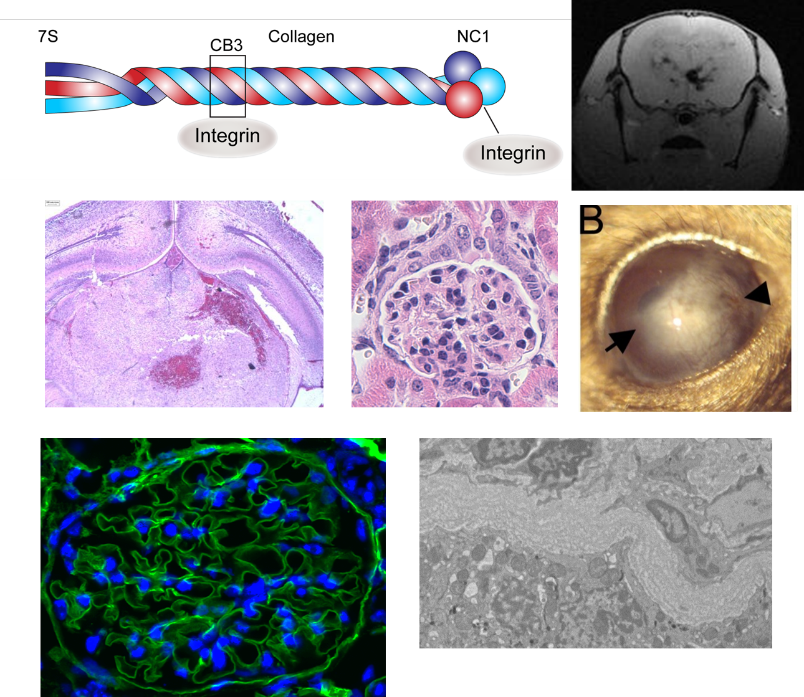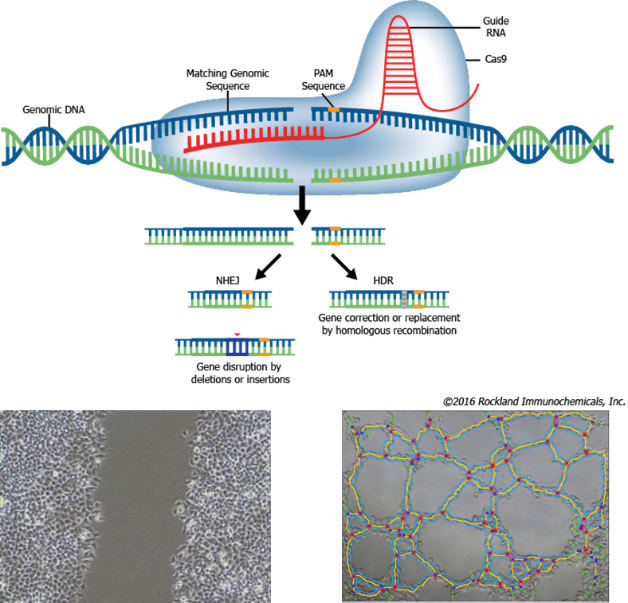Professor Tom Van Agtmael
- Professor of Matrix Biology and Disease (Cardiovascular & Metabolic Health)
telephone:
01413306200
email:
Tom.VanAgtmael@glasgow.ac.uk
R423 Level 4, Institute of C&MS, Davidson Building, Glasgow G12 8QQ
Biography
Following his undergraduate training in Biochemistry at the University of Antwerp (Belgium), Dr. Van Agtmael obtained his PhD in molecular genetics at the Murdoch Childrens Research Institute in Melbourne (Australia). He then moved to the MRC Human Genetics Unit in Edinburgh for his post-doctoral training as an EU Marie Curie Fellow during which he identified the first vertebrate Col4a1 mutations and implicated type IV collagen in eye and kidney disease. Following a CVRI Wellcome Trust Fellowship at the University of Edinburgh, he was awarded a MRC New Investigator Research Grant to investigate the role of collagen IV in vascular biology. He then joined the University of Glasgow as a RCUK Fellow in Human Molecular Genetics where he established his research group within the Institute of Cardiovascular and Medical Sciences.
Research interests
Research Theme: Vascular Diseases and Comorbidities
Investigating the role of the extracellular matrix in vascular, eye and kidney disease to uncover new therapies.
Without an extracellular matrix, there would only be single cells and life is not possible. Our understanding of the roles of the extracellular matrix in disease and human health has gone from a simple structural support to a biological active structure that plays a key role in all aspects of cell and tissue function. Collagen is the major component of the extracellular matrix and of the human body. Mutations and defects in collagen and the extracellular matrix (ECM) cause complex genetic diseases that affect multiple tissues for which often there are no treatments. Moreover the ECM plays an important role in many common disorders such as vascular and cardiac disease, fibrosis, cancer, and degenerative age related diseases. However, the mechanisms by which this occurs remains unclear and this poor understanding forms a barrier to much needed treatments.
Our research aims to address this by investigating how mutations in collagen proteins cause disease with the aim of developing highly effective treatments. For this we use a large number of different approaches to analyse the mutations and disease from the molecular to patient level. Please see below for some of the ongoing projects within the lab. If you are interested in joining us, please do get in touch as we are keen to explore new avenues.
Collagen IV, basement membranes and cerebrovascular, eye and kidney disease.
Vascular and cerebrovascular disease are major causes of death and disability that place a significant burden on Societies and healthcare systems worldwide. The analysis of rare genetic forms of these diseases will help our understanding of the common forms of these disorders, and treatment development. Through the analysis of mouse models, we identified for the first time that mutations in the genes COL4A1 and COL4A2 (collagen IV alpha chain 1/2) cause eye and kidney disease together with stroke and cerebrovascular defects (Van Agtmael et al 2005, 2010, Plaisier et al 2007). This complex syndrome, referred to as COL4A1 related syndrome, also includes HANAC and PADMAL syndrome which we helped to describe (Plaisier et al 2007, Verdura et al 2016). COL4A1 related diseases remains poorly defined and current projects are ongoing within the lab to help define the disease to help the patients and clinicians with managing the disease and provide better disease prognosis.
Importantly, we also established that collagen IV is a risk factor for haemorrhagic stroke in the general population and acts through both rare and common variants (collaborations with Prof. Anderson and Rosand (Harvard University) and Al Shahi Salman (Edinburgh)(Chung et al 2021, Rannikmae et al 2015). Combined with data from other Mendelian forms of cerebrovascular disease, this has highlighted the extracellular matrix as a potential convergent critical component of the disease mechanism of cerebrovascular disease.
A major focus is to uncover how these genetic variants and mutations cause disease. We uncovered they act via defects in the extracellular matrix but they also affect intracellular pathways such as endoplasmic reticulum stress (Jones et al 2019, Murray et al 2014, Van Agtmael et al 2010, Van Agtmael et al 2005). Moreover, we identified they may have tissue and/or cell specific mechanisms providing further complexity in how they cause disease (Jones et al 2016). Yet the relative contribution of these mechanisms and how they result in the different pathologies is entirely unclear and represent a major gap in our knowledge. As a result, to develop effective and safe treatments it is necessary to understand the disease mechanisms at the molecular level and identify pathways and molecules that can alter disease development. Our recent work using biomaterials suggested a role for fibronectin and integrin in this aspect (collaboration Prof. Manuel Salmeron-Sanchez, Centre for the Cellular Microenvironment, Glasgow)(Ngandu Mpoyi et al 2020). Several projects are available to determine disease mechanisms, employing cell culture and animal models coupled with a battery of approaches ranging from electron and atomic force microscopy to genetics, biochemistry and physiology (collaboration Prof. Delles, Smith, Loughrey, Fuller in CAMS). These mechanisms will then be targeted with the aim of modulating disease. For example, targeting ER stress via PBA was able to prevent and reduce stoke severity in mice, but was unable to modulate the eye and kidney defects (Jones et al 2019). These approaches provide a powerful stepping stone to achieve our long-term aim of addressing the basis of disease from gene to patient level and inform on novel therapeutic and preventative strategies.

Other collagens and disease: Collagen III and vascular Ehlers Danlos Syndrome V
Based on our expertise with collagen IV, we are currently expanding our work into other mechanisms and collagens. In collaboration with Profs. Neil Bulleid (Institute of Molecular, Cell and Systems Biology, Glasgow) and Fransiska Malfait (Centre Medical Genetics, Ghent) we have ongoing projects investigating mutations in the gene COL3A1 (collagen III) and vascular Ehlers Danlos Syndrome, a genetic connective tissue disorders that leads to arterial dissection and rupture. We employ different systems to determine the molecular mechanisms by which these mutations cause vEDS and aortic aneurysm formation.
In addition, we are continuously considering other disease to which we can apply our expertise in cell-matrix biology.
Research groups
Grants
Grants and Awards listed are those received whilst working with the University of Glasgow.
- Proteomics to unlock mechanisms of childhood haemorrhagic stroke in COL4A1 syndrome
Glasgow Children`s Hospital Charity
2022 - 2022
- Cellular Homeostasis and Aging in Connective Tissue Disorders
EPSRC EU Guarantee
2022 - 2026
- Elucidation of molecular pathways underlying cardiac disease caused by Col4a1 mutations
Heart Research UK
2018 - 2021
- Elucidation of molecular pathways underlying cardiac disease caused by Col4a1 mutations
Heart Research UK
2018 - 2022
- Developing MRI methods to Detect Subtle Changes in Blood Brain Barrier Permeability
Neurosciences Foundation
2018 - 2019
- Collagen IV variants and their role in intracerebral haemorrhage in the general population
Medical Research Council
2018 - 2021
- Disintegration of the cerebral matrisome: a central mechanism leading to small vessel disease and vascular cognitive impairment
Stroke Association
2017 - 2021
- Targeting intracellular pathways to dissect mechanisms of cerebrovascular disease.
British Heart Foundation
2016 - 2019
- Using C. elegans to identify novel genetic modifiers of collagen IV mutations that cause stroke
Tenovus Scotland
2015 - 2015
- A polyomics based approach to identify molecular pathways and genetic modifiers which influence the development of stroke caused by collagen IV mutations (ISSF)
Wellcome Trust
2013 - 2014
- Elucidation of molecular pathways underlying renal disease caused by Co/4a 1 mutations using mouse models.
Kidney Research UK
2013 - 2015
- New Investigator Research Grant
Medical Research Council
2007 - 2010
- RCUK Academic Fellowship - IBLS
Engineering and Physical Sciences Research Council
2007 - 2012
Additional information
Invited International Presentations
- 2012: Melbourne, Australia - Invited seminar speaker, Faculty of Medicine, Northern Hospital, University of Melbourne
- 2012: Melbourne, Australia - Invited seminar speaker, Murdoch Childrens Research Institute
- 2012: Oxford, England, UK - Joint Meeting of the British and German Societies for Matrix Biology
- 2011: Brussels, Belgium - Invited seminar speaker, Department of Medical Genetics Université Libre de Bruxelles - Erasmus Hospital
- 2011: Scottish Society for Experimental Medicine
- 2011: Leicester, England, UK - Invited seminar speaker, Cardiovascular Research Theme, University of Leicester
- 2011: Bristol, England, UK - Invited seminar speaker, Department of Paediatric Neurology, Royal Hospital for Sick Children
- 2011: Southampton, England, UK - Invited seminar speaker, Department of Medical Genetics, University of Southampton
- 2010: Manchester, England, UK - British Society Matrix Biology Meeting
- 2009: New Hampshire, USA - Invited speaker at the Collagen Gordon Conference
- 2007: Oulu, Finland - Invited speaker, Biocenter Day University of Oulu
- 2007: Paris, France - Invited seminar speaker, INSERM Unit, Tenon Hospital, Department of Nephrology
- 2006: Manchester, England, UK - Invited seminar speaker, Wellcome Trust Centre for Cell-Matrix Biology
- 2006: Glasgow, Scotland, UK - Invited speaker at the ERA-EDTA (European Renal Association) Conference
- 2005: New Hampshire, USA - Invited speaker at the Collagen Gordon Conference
- 2005: Paris, France - Invited seminar speaker, INSERM Unit, Tenon Hospital, Department of Nephrology
- 2005: Strasbourg, France - International Mouse Genome Conference
- 2004: Rhode Island, USA - Invited speaker at the Basement Membrane Gordon Conference
Professional Learned Society
- 2012 - present: British Society for Matrix Biology - Committee Member
- 2011 - present: Genetics Society - Member
- 2010 - present: British Society for Matrix Biology - Member
- 2007 - present: International Society of Matrix Biology - Member
Research Fellowship
- 2007 - 2012: Research Councils UK Academic Fellowship
- 2004 - 2007: Wellcome Trust CVRI Fellow
- 2002 - 2004: EU Marie Curie Fellow


